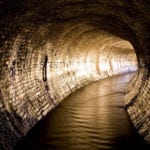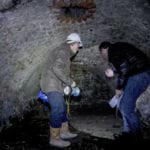 Our World
Our World  Our World
Our World  Movies and TV
Movies and TV The 10 Coolest Stars to Set Sail on The Love Boat
 History
History 10 Things You Didn’t Know About the American National Anthem
 Technology
Technology Top 10 Everyday Tech Buzzwords That Hide a Darker Past
 Humans
Humans 10 Everyday Human Behaviors That Are Actually Survival Instincts
 Animals
Animals 10 Animals That Humiliated and Harmed Historical Leaders
 History
History 10 Most Influential Protests in Modern History
 Creepy
Creepy 10 More Representations of Death from Myth, Legend, and Folktale
 Technology
Technology 10 Scientific Breakthroughs of 2025 That’ll Change Everything
 Our World
Our World 10 Ways Icelandic Culture Makes Other Countries Look Boring
 Our World
Our World 10 Ways Your Christmas Tree Is More Lit Than You Think
 Movies and TV
Movies and TV The 10 Coolest Stars to Set Sail on The Love Boat
 History
History 10 Things You Didn’t Know About the American National Anthem
Who's Behind Listverse?

Jamie Frater
Head Editor
Jamie founded Listverse due to an insatiable desire to share fascinating, obscure, and bizarre facts. He has been a guest speaker on numerous national radio and television stations and is a five time published author.
More About Us Technology
Technology Top 10 Everyday Tech Buzzwords That Hide a Darker Past
 Humans
Humans 10 Everyday Human Behaviors That Are Actually Survival Instincts
 Animals
Animals 10 Animals That Humiliated and Harmed Historical Leaders
 History
History 10 Most Influential Protests in Modern History
 Creepy
Creepy 10 More Representations of Death from Myth, Legend, and Folktale
 Technology
Technology 10 Scientific Breakthroughs of 2025 That’ll Change Everything
 Our World
Our World 10 Ways Icelandic Culture Makes Other Countries Look Boring
Ten Fascinating Things Happening Underground
Sea level is so overrated. Wonders abound beneath our feet—sometimes a few meters, sometimes a few miles. Some require nine-figure excavations and a team of international researchers, others a modest shovel and flashlight.
Pioneering scientific experiments, macabre reminders of history both recent and remote, and life forms that eluded mankind’s discovery for millennia are just part of the sublime subterranean scene. Here are ten fascinating things happening underground.
Related: 10 Communities Of People Who Live Underground
10 The Search for Dark Matter
In an abandoned gold mine nearly 1.6 kilometers (1 mile) below the Black Hills of South Dakota, 250 scientists from 37 institutions have constructed the Sanford Underground Research Facility (SURF). Its mission is to significantly advance the elusive search for dark matter.
The project is called LUX-ZEPLIN. LUX stands for Large Underground Xenon, while ZEPLIN stands for ZonEd Proportional scintillation in Liquid Noble gases. Well, duh.
The goal is to solve what might be the last piece in dark matter existence’s puzzle. In layman’s terms, we’re well aware of the universe’s matter-centric occupants—everything from rocks, water, and gasses to protons, electrons, and subatomic particles. The problem is that their combined mass doesn’t equal that of the universe—not by a long shot, actually.
To solve this riddle, LUX-ZEPLIN intends to record the presence of a physics unicorn of sorts: a weakly interacting massive particle with the apt acronym WIMP. The task involves a 1.5-meter-tall (five-foot) tank filled with about one-quarter of the world’s annual supply of liquid xenon. The hope is that, should a WIMP pass through, it might glance off a xenon nucleus, which would emit a flash of light or photon—allowing scientists to “see” dark matter.
The site’s exceptionally subterranean location is designed to block the humming interference in the world around us, long an obstacle to the search for dark matter. The experiment is set to run for about five years.[1]
9 20,000 Corpses Under a Public Park
New York City is a modern metropolis whose early years often entailed a stunning lack of foresight. As late as the 1790s, officials failed to envision the already-bustling city growing more than a mile north, let alone consuming the 21.7-kilometer-long (13.5-mile) island of Manhattan.
In 1797, the city purchased farmland to create a potter’s field for the indigent, poor, criminals, and disease victims. The plot was less than a mile north of the city’s growing urban sprawl. Soon, Yellow Fever hit, with waves of the deadly, contagious disease ravaging New York City through 1803. The field began filling up, reaching capacity in the early 1820s.
In 1827, in a self-interest-driven real estate scheme, Mayor Philip Hone announced plans to transform the field into a public square. In the development rush, disinterment and reburial were completely foregone. The potter’s field was renamed “Washington Military Parade Ground”—a nod to the 50th anniversary of the country’s founding—before being shortened to Washington Square Park.
According to the 2005 book Inside the Apple: A Streetwise History of New York City: “While estimates vary, it seems likely that over 20,000 people were buried in the land… they remain to this day under the grass and pavement of Washington Square.”
The real estate scam paid off: The area’s property values soared 240% in the next five years, gobbled up largely by the college that would become New York University.[2]
8 Extreme Resilience
Late last year, scores of species were found living in extreme cold and total darkness, 200 meters (650 feet) beneath the ice in one of the world’s most unforgiving habitats: Antarctica’s Ekström Ice Shelf. Seventy-seven distinct types of worms and moss animals called bryozoans were found in pitch-black waters of -2° (28°F). The cornucopia of creatures is changing how researchers consider the livability of such extreme submarine environments.
Though examples of some of these animals have been identified elsewhere in Antarctica, finding such a particularly foreboding locale teeming with life is a first. “This may give us clues into how life in polar seas survived glaciations,” said David Barnes, a marine ecologist with the British Antarctic Survey.
To access the surprising subterranean spot, researchers used a specialized hot water drill to bore through the ice, then dropped cameras down more than 60 stories. Carbon dating revealed that life had continuously existed there for nearly 6,000 years.
Other instances of unexpected existence have been found in Antarctica. In many, microbes seemingly subsist on pulverized bedrock in the sediment beneath the continent. On rare occasions, larger organisms also manage to survive, including sponges some half a mile below the ice—a discovery one researcher said was like “finding a bit of the rainforest in the middle of the Sahara.” While this latest discovery wasn’t as deep, it nonetheless expands the number of environments known to sustain life.[3]
7 A City Under a City
With due respect to Edmonton and Ottawa, whose average winter temperatures are -7.3°C (18.8°F) and -6.5°C (20.3°F), respectively, Montreal is the coldest bonafide metropolis in North America. It is the second-coldest of its size in the world (Harbin, China is first, with a metro area of over 10 million and an average wintertime temperature of an insane -11.8°C or 10.8°F).
Montreal’s average is just -6.2°C (20.8°F) in winter and, due to its location right on the St. Lawrence River, feels far frostier. Through the decades, the city has perfected a novel way to combat the cold: burrowing beneath it. Just under the frigid feet of those at street level is an immense network of malls, tunnels, and transportation systems that allow Montrealers to literally stay under the weather.
Called le Réso, the network comprises over 32 kilometers (20 miles) of walkways connecting subway stations, office buildings, and housing complexes, much of it lined with top-notch shopping and dining. So commonplace and comprehensive is Montreal’s subterranean lifestyle that many commuters don’t even bother taking a coat with them to work because their day simply doesn’t include stepping outside at all. Ditto for students and visitors, who can leave dorms or hotels and reach schools, universities, museums, theaters, and more…all without packing a jacket.
Montreal’s underground is also an attraction unto itself, featuring such charms as a skating rink and regular public space art exhibitions.[4]
6 Nothing, Unfortunately
No list of underground marvels would be complete without a legend that has birthed arguably the stupidest show in television history. I’m talking, of course, about The Curse of Oak Island.
Located off the south shore of Nova Scotia, Canada, Oak Island is not large—about a mile long and half a mile wide. And for over two centuries, people have been searching for an alleged treasure whose origins could trace to any number of figures, from pirates Captain Kidd and Edward “Blackbeard” Teach to secret societies like the Freemasons and Knights Templar.
In 2006, Michigan brothers Rick and Marty Lagina bought a 50% stake in the company that owns the island and became the latest in a long line of treasure hunters. Since then, their fruitless adventures have gone from empty-handed to empty-headed, further lowering the IQ of reality television—which is saying a lot. Find trinkets, declare it means “something else must be out there,” repeat.
And repeat. And repeat. In 2021, The Curse of Oak Island completed its treasure-teasing eighth season. That’s 138 separate hour-long episodes of guys digging empty holes in the ground and speculating about where the next hole should be dug. It’s like watching a squirrel try to find a buried acorn—although, in the squirrel’s defense, the acorn is actually real. I guess it’s time to catch up on the emptiness of Season 9![5]
5 Nothing, Fortunately
On an unassuming Berlin street, just down the road from the sprawling Holocaust Memorial, is a parking lot surrounded by typical, 1980s-style concrete East German apartment buildings. Until 2006, no indication whatsoever existed of the ground’s dark historical significance. These days, a simple plaque informs passersby of what lies just a few feet beneath them: the bunker where Adolf Hitler met his end.
Sarcastically known by locals as the “Führerbunker Parking Lot,” the paved-over place was once a garden of the Reich Chancellery. It is where the Nazi leader spent the final 3½ months of his life, descending into its depths on January 16, 1945, when the bombing of Berlin became too dangerous to stay above ground. He would go on to celebrate his last birthday there—his gift was the first bursts of Soviet shells on Germany’s capital. Nine days later, he would marry his long-time girlfriend there and, the next day, commit suicide in his chambers. Some honeymoon.
Hitler’s final days were a mix of mania, paranoia, and for his fellow bunker mates, pending doom. As he conducted reviews of Berlin’s waning defenses, held meaningless yet hours-long military strategy sessions, and generally denied reality, those around him tried to wriggle away, making their best excuses for why their presence was no longer necessary.
While much of the bunker was destroyed in Berlin’s rebuilding, some sections remain. They have been sealed off to prevent vandalism—or, even worse, tributes.[6]
4 Drug Smuggling
While a 3,218-kilometer-long (2,000-mile) wall spanning the border of the United States and Mexico might put a dent in record-high illegal migration, it likely wouldn’t do much to combat drug smuggling. Mexican cartels have long had the resources and incentives to take their underground business…well, underground.
Often, their U.S. destination of choice is San Diego, whose suburbs extend to the Mexico border. On its outskirts, the city offers vast industrial areas yielding the anonymity of large warehouse buildings. The result is a hidden underground highway whose terminus can serve as both a receiving and processing spot. So prolific is the practice that San Diego actually has its own Tunnel Task Force manned with local and federal agents.
The largest of such tunnels was discovered in March 2020 at a warehouse in the San Diego suburb of Otay Mesa. Nearly 1.5 kilometers (1 mile) long and 9 meters (30 feet) deep, agents described the ambitious passageway as the most sophisticated they had ever seen, with an extensive rail and cart system to rapidly transport drugs, forced air ventilation, and high-voltage electrical cables and panels.
Dubbed “Baja Metro” by border agents, the tunnel also had an elevator at its entrance and a complex drainage system. The bust seized more than two tons of drugs, including 590 kilograms (1,300 pounds) of cocaine, at an estimated value of $30 million.[7]
3 The Doorway to Hell
In Turkmenistan’s remote Karakum Desert lies a tourist attraction that lures thousands each year. It’s called the Darvaza Gas Crater, and it’s a sterling example of both nature’s power and mankind’s stupidity.
In 1971, when the central Asian republic was part of the USSR, a team of Soviet geologists traveled to the Karakum Desert seeking oil (the country is rich in petroleum and natural gas). Upon discovering what they believed was a substantial oil field, they commenced drilling.
But they hadn’t hit oil—they’d hit a cavernous pocket of natural gas that couldn’t support their equipment’s weight. The site collapsed, swallowing their drilling rigs and triggering a domino effect in the crumbly sedimentary rock. By the time the ground stabilized, there were several open craters, the largest of which measured 70 meters (230 feet) across and 20 meters (65 feet) deep. Good work, everyone.
It gets even dumber. Shortly following the event, wildlife in the surrounding desert began to die off. This was due to the craters’ high levels of methane, which in addition to being dangerously flammable, depletes the oxygen supply in its vicinity.
So the scientists decided to light the crater on fire, hoping that all the potentially lethal natural gas would burn away in a few weeks. Their calculations were slightly off. Nicknamed the Gates of Hell, the craters have been burning bright for half a century.[8]
2 Trees Talking
Recent scientific studies confirm that trees are far more alert, sophisticated, and social than initially thought. Underground, through roots connected via fungi, bacterial matter, or other plants, trees not only communicate information about environmental factors like drought and disease but can even “lend” each other nutrients or water. This exemplifies a far more collective approach to “survival of the fittest” than most nature experts believed trees could exhibit.
There’s even a neat name for the phenomenon: the Wood Wide Web, which is believed to predate the source of its derivative nickname, the World Wide Web, by about 500 million years. In 2019, an international study covering 1.2 million forest plots and nearly 30,000 species produced the first global map of the underground networks comprising this secretive world.
While certainly competing for sunlight above ground, below the surface, trees are strikingly collaborative. Through the web, trees send chemical, hormonal, and slow-pulsing electrical signals to relay information ranging from pending drought and parasitic threats to nutrient disruptions and potential soil toxins. The result is an early warning system aligning with a group-centric “rising tide lifts all ships” concept.
Much of the Wood Wide Web’s success is mycorrhizal, meaning it relies on symbiotic relationships between plants and fungi. Research reveals this system’s importance in limiting climate change through carbon storage and, concerningly, its fragile susceptibility to rising global temperatures.[9]
1 The Largest Living Thing on Earth
Many people would be able to name the world’s largest animal, the blue whale. And perhaps they’d even come up with the world’s largest tree: the Giant Sequoia, whose tallest specimen currently stretches some 84 meters (275 feet) into the sky, with a base diameter of an astounding 11 meters (36½ feet).
But to find the world’s largest living thing, we must venture underground. Discovered in 1998, a single fungal organism in Oregon’s Malheur National Forest covers an area of 9 square kilometers (3½ square miles)! That’s one humongous fungus among us.
Called Armillaria ostoyae, the reason so few know about this record-holding life form is its almost exclusively subterranean existence. Armillaria ostoyae is not a mushroom but rather a network of fungal threads and cords called hyphae. A parasitic fungus, it infiltrates tree bark and root systems, spreading out across the forest floor to find new hosts to colonize. While parts of it do pop up from time to time to reproduce, the massive non-mushroom remains mostly out of sight.
Notably, fake photos of Armillaria ostoyae have recently circulated online. One shows a mushroom the size of a house, towering over dazzling spectators. Another shows a mushroom stalk as thick as a tree trunk. The fraudulent fungal photos have led to many duped, disappointed visitors to the national park.[10]








